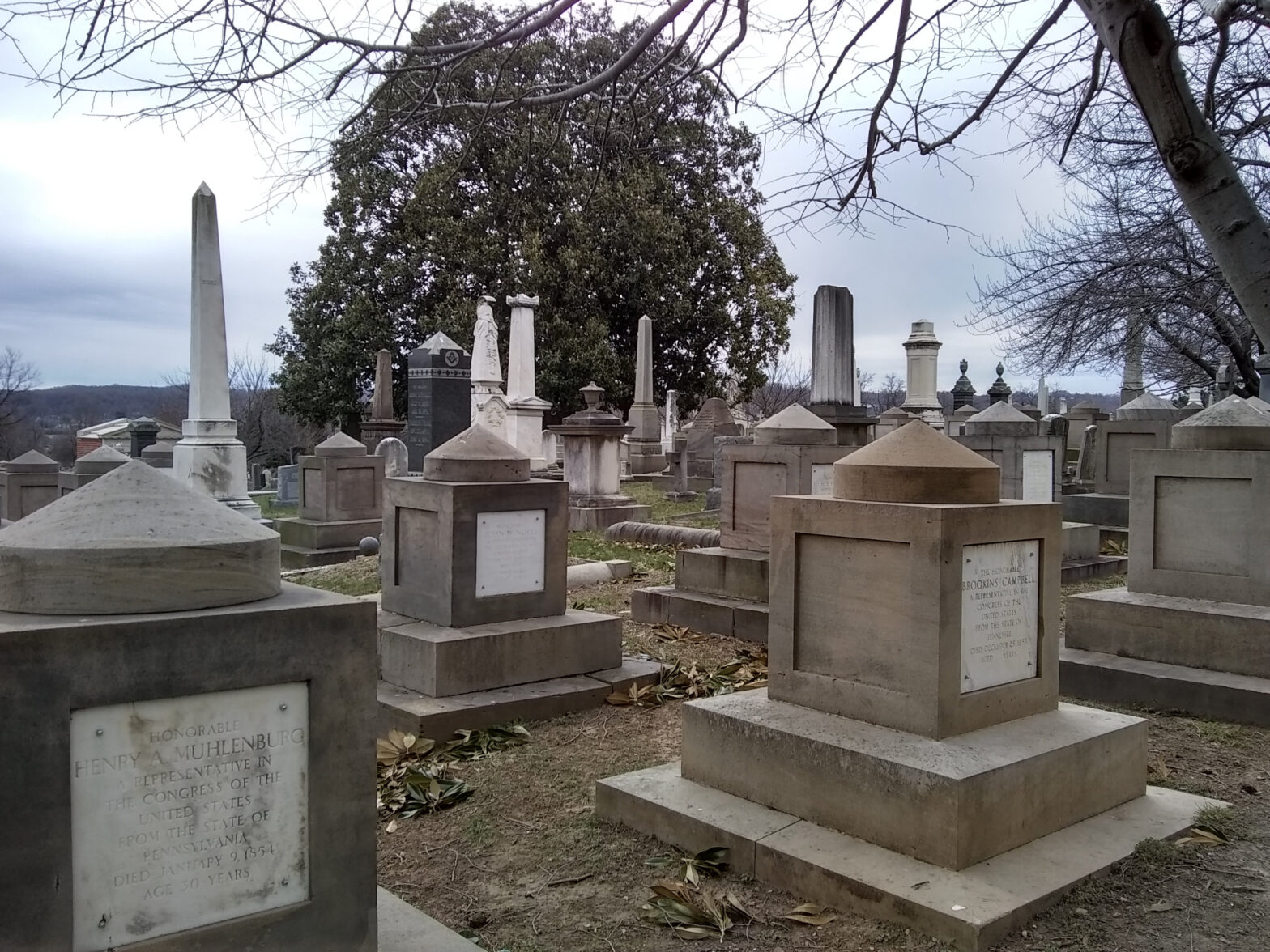There’s a photographer on Twitter, Jim Havard, who often posts photographs of Congressional Cemetery. He lives in the neighborhood near the cemetery, and he gets some fantastically beautiful imagery of the old graves. I often look at his photos and wonder, “Do I know this spot? Do I see my family?” I did, after all, when I saw the photograph of Mary Ann Hall’s monument on Wikipedia two years ago.
Last week, Havard posted this striking image:
There was something in the air that night; we had stunning clouds north of Baltimore that evening as well.
I kept looking at Havard’s photograph, and the voice in my head kept saying, “I know this, I know this.” And I did, sort of. I recognized the general location — the southeast annex of the cemetery — the road backed by the fence sort of gives it away — but not the precise location. There was a lot that seemed familiar, but how far back into the annex was this? The fisheye lens didn’t help matters.
I saved the photo from Twitter to my phone, and I’d look at it from time to time. What could I see? I have photographs of the annex — I have family there — but I didn’t want to consult those yet. Could I work it out on my own?
My great-grandfather’s sister Ella Gardner (short of Ellanor) is buried in the annex with her husband, Civil War veteran (and also deserter — he served three years in prison for deserting at the end of the war) Edward Hawk. Also there is one of her children — Ida, I believe, without consulting my notes. Ella was born in Washington after the Civil War, so Edward was a fair bit older than her. There’s a society note in the Washington Post in 1905 that my great-grandfather Allyn and Edward and their families would be summering in Virginia that year. Edward died in 1909, and Ella and their children moved to Federal Hill near Baltimore and lived a few blocks from Ella’s younger Gardner half-siblings.
I didn’t see Edward’s stone — the distinctive rounded military stone, mostly sunken into the ground — in Havard’s photograph.
But the more I looked at the photograph, the more this felt like the right area to me.
There’s a stone — and I’m going to be blunt — that looks a bit like a gray, erect phallus, and it’s something of a landmark for me. Go into the annex, go down the road, there’s “the penis,” that’s the right section, go to “the penis,” then head parallel to the road, go about twenty feet, and that will get me to the right area. What’s notable about “the penis” is that it’s turned 45 degrees from everything else.
A little left of center in Havard’s photograph, there’s a stone that looks like “the penis.” The problem is, I couldn’t tell — is it turned, or is it the fisheye lens that makes it look turned?
And then, if it were “the penis,” where’s the brick mausoleum on the hill beyond the trees? Where’s Marion Barry? And if Barry is there, I should be able to see my great-grandfather’s half-brother Thomas Hardy as well.
I just couldn’t tell. Intuitively, the more I looked at the photograph, the more I was convinced it was “the penis” and the more I became convinced that Havard took his photograph near Ella and Edward Hawk, from about twenty feet to their right.
Now I turned to the photographs. And I ascertained that yes, my conclusion was correct — I did know this place — and yes, Ella and Edward, while not in the photograph, are really close.
The key is the stones in the left corner. That’s a row that runs north-south. It doesn’t quite look like it due to the lens. There’s one grave between the stone you see in the left corner and Edward Hawk.
The large pillar at the bottom of Havard’s photograph is angled forty-five degrees. You can see it in this photograph of “the penis” — ie., the Rodrick marker — from St. Patrick’s Day, 2018. (I visited Congressional Cemetery before attending Shamrock Fest that day.)
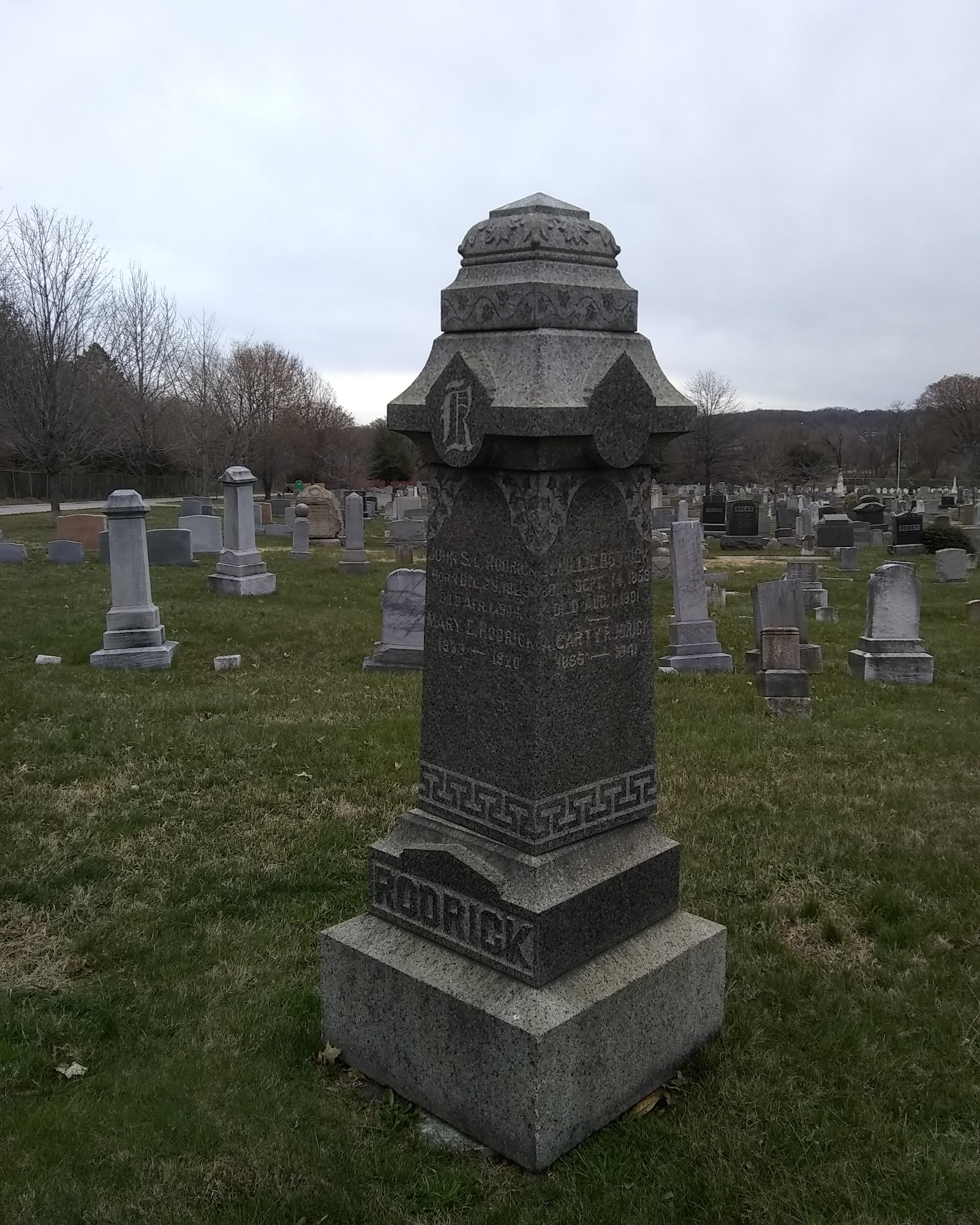
The fisheye lens makes the rows look further apart than they are. Edward and Ella, though they’re not visible in this photograph, are three rows beyond the Rodrick marker. You can also see the two identical plain white columns, one angled, one not, at the left; in Havard’s photograph, the angled one is at bottom left, the unangled one is center-left, obscuring “the penis.”
This photograph is from “the penis,” looking at the back of Edward Hawk’s stone, and the angled plain pillar is at the left.
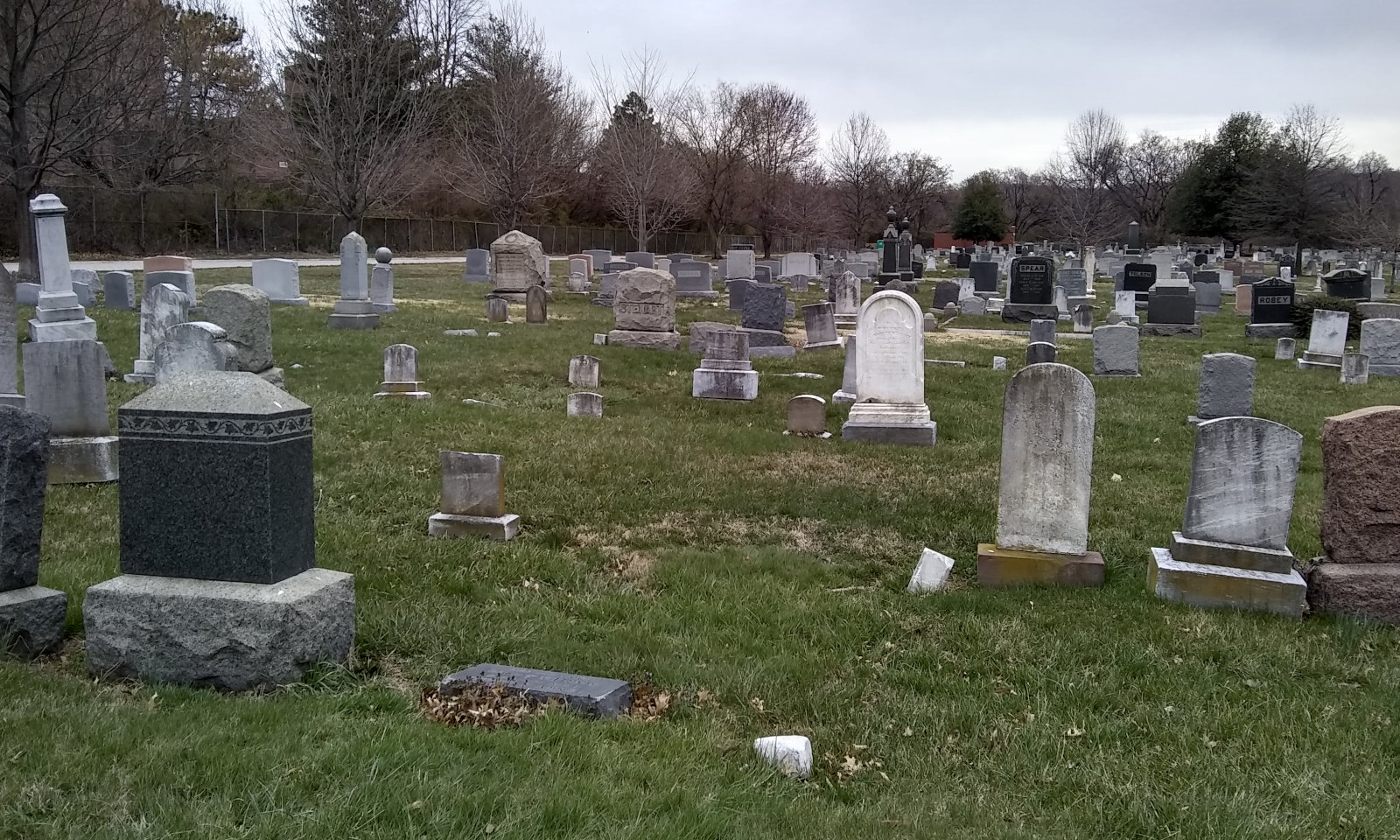
This photograph of Congressional Cemetery by Anthony Reyes shows the same area but from a different angle; the turned pillar at bottom left of Havard’s photograph is centered here, and the identical unturned pillar westward of it (ie., the direction Havard was pointing) is at right. That turned pillar reads “Bobbitt,” by the way. The Hawks are not in Reyes’ photograph. They would be, like in Havard’s, a few feet off the edge. In this case, the right edge.
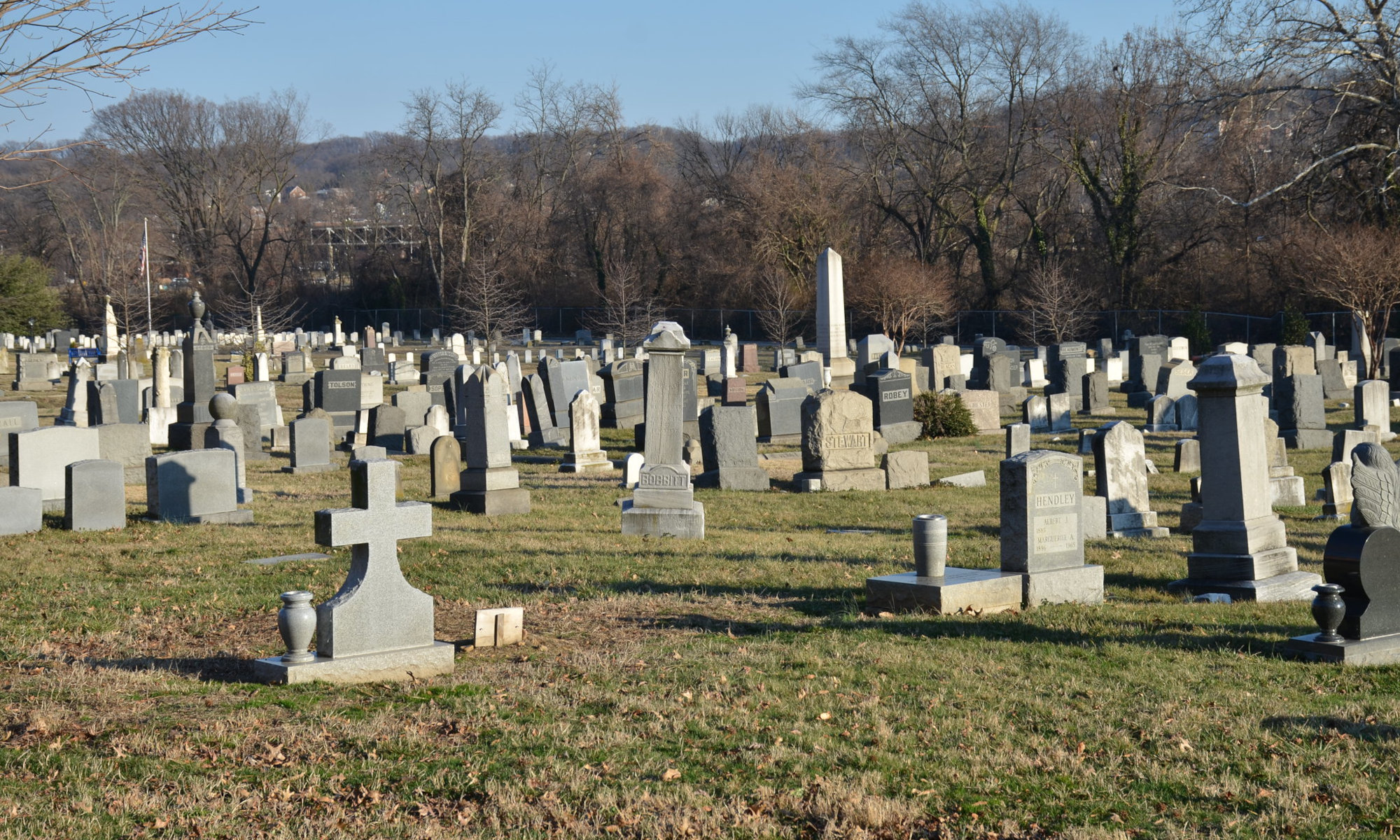
This photograph is of Edward Hawk’s grave — Ella is unmarked to the left — and “the penis” is at the right. See? Very close. The fisheye lens makes everything look more distant.
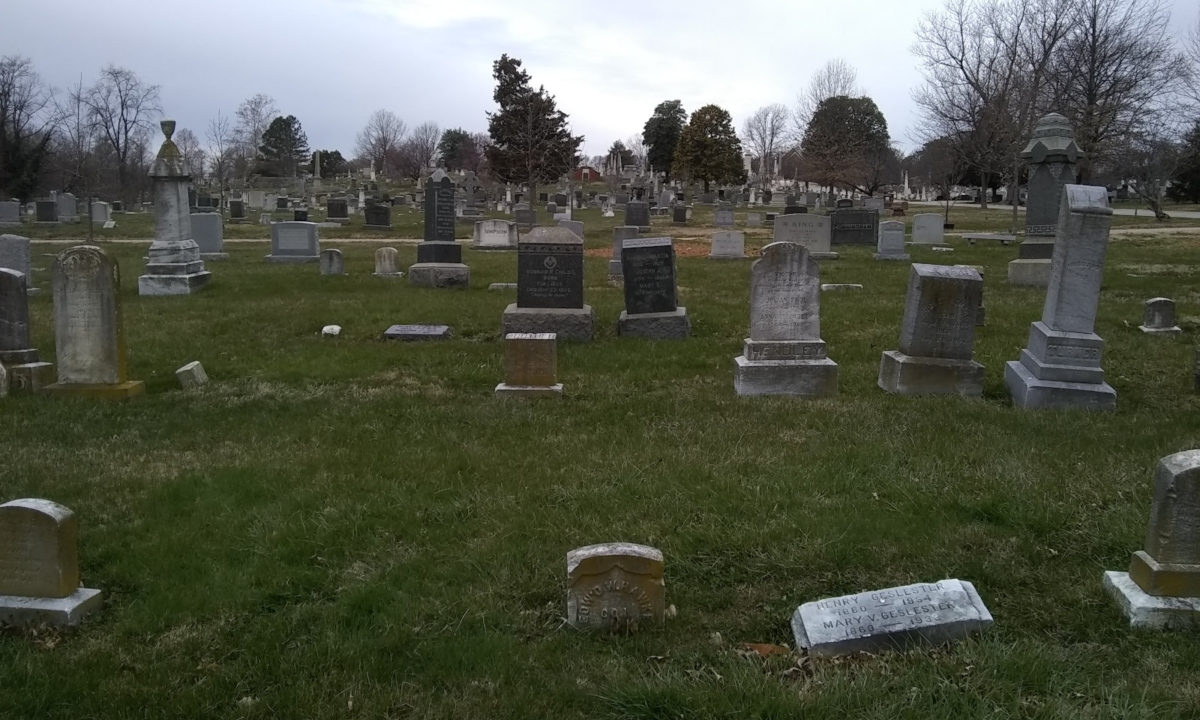
Straight ahead, you can see the brick mausoleum I mentioned.
Directly beneath those in the photograph — they’re not actually physically close — there are two identical black markers. The one on the left says “Teachum,” the one on the right says “Hardy.” They are identical because Mary Teachum and Emma Hardy were sisters, and Emma’s husband Thomas Hardy was the first son of my great-great-grandmother Susan Fenhagen Hardy Gardner. Just to the right of those is Marion Barry, former mayor of Washington.
This is the newspaper account of Thomas and Emma’s wedding in 1882 in the Washington newspaper, The Critic. (The newspaper has Thomas’ name incorrect; it was Thomas G. Hardy. The same paper had it correct two days earlier.)
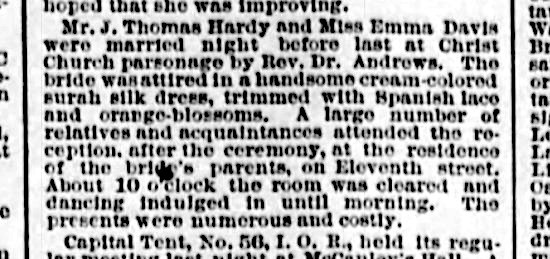
My great-grandfather Allyn wasn’t even three.
I’ve mentioned a number of times that I suspect my ancestors attended Christ Church, an Episcopalian church on Capitol Hill — and the church attached to Congressional Cemetery. Circumstanially, it made the most sense — in the 1860s, the Gardners lived one block over; when Susan married William Gardner in 1879, they were married by an Episcopalian priest; when Susan died in 1902, her service was handled by an Episcoplian priest. That newspaper clipping is the largest piece of non-circumstantial evidence I have.
What does all this tell me?
It tells me it’s been too long since I’ve walked the grounds of Congressional Cemetery — not since September 2019, before I was hospitalized and blind — and I need to return.
